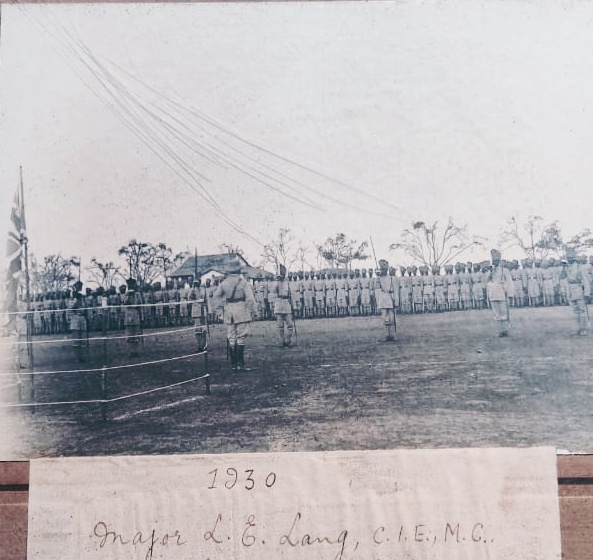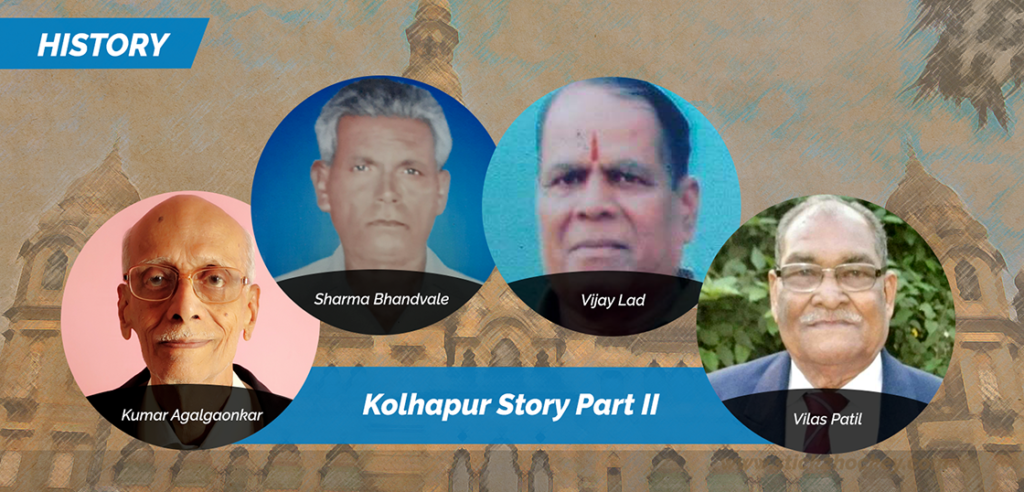By Ranjit Dalvi
KOLHAPUR HOCKEY STORY – II:
Can pride and passion just be good enough to preserve a culture and sustain a tradition? In most cases the answer would be in the negative! But take the case of Kolhapur and the sport of hockey. It has survived and prospered to a certain extent due to the people who yet derive immense pleasure despite the lack of incentives!
After integration of Kolhapur State in the Indian Union in 1949, the region had to inevitably embrace or accept a different culture and new traditions. For years the Royals had been their patrons, now it would be the government. In this case the Bombay Presidency. The centre of power had shifted to Bombay (Mumbai), the capital of the province. Maharashtra as a state was yet to be born.
The Royals, descendants of the Maratha power, mainly patronised Wrestling and Football. Tennis, Table Tennis, Swimming, Kabaddi and Kho-kho also enjoyed considerable support. The activities were conducted by the Kolhapur Sports Association (KSA), formed in 1940 by Chhatrapati Rajaram Maharaj.
But Hockey hadn’t been on its agenda. So the onus was on hockey lovers to passionately support their hobby. Introduced by British Army regiments and nurtured by the Rajaram Rifles (the state police force), it was played on the outskirts of Kolhapur city in the infantry lines.
When the princely states joined the Indian Union, the nation’s rise as a hockey world power had infused a sense of pride in the people. But the game suffered due to lack of a proper structure as brought to light in an earlier article.

Kolhapur Army, circa 1930
Those serving as infantry soldiers and policemen were given the option of joining the army as well as the police. But the opportunities to pursue a sport, especially hockey diminished. The district police would field just one team for their departmental meets. Gone were the inter-unit competitions. That was it!
But the erstwhile infantry lines endured the setback and formed their hockey clubs. This led to the process of popularising hockey in schools and colleges in the Kolhapur region. Somewhere around 1960, Vidyapeeth H S and St. Xavier’s H S made a start. In the former physical education teacher Kasam Shaikh, a resident of the infantry lines took the lead. The institution had a big playground outside the city. Named Tapovan (a grove for penance), it was the abode of Gangadhar Dikshit, the guiding force of the institution.
The trainees enjoyed the 3-4 km daily trek. And once or twice a week they went to the River Panchganga for a swim to improve their physical capacity. In St. Xavier’s the Jesuits gave an impetus to the growth of hockey.
Situated near the police headquarters Xavier’s found it convenient to train and play practice games with the police. In a couple of years the youngsters from started beating their masters. This was narrated by Vilas Patil, an iconic player from Kolhapur, now into his eighties. Vilas used to coach the boys along with a couple of his team mates.
Vikas Patil ‘Babu’
Vilas affectionately called ‘Bapu’ had benefitted from his exposure with the Bombay State Police team. Recruited in 1957 when in class IX, this lad made a notable mark as a sprinter in the police athletics meet held at Worli in Mumbai. Impressed, the state sports officials very soon inducted him in the hockey team.
The Bombay Police was then headed by Jimmy Jameson. He had played in 25 editions of the historic Aga Khan Cup tournament and had been an umpire at the Tokyo and Mexico Olympics.
Bapu played in the BPHA League from 1959-71 which was by all standards the best in India. He played in the prestigious Bombay Gold Cup, the Aga Khan Cup, a few West Zone and All-India Police Championships when Indian hockey was at its zenith. Most of these years were spent at Naigaon, the Bombay Police Headquarters.
It was a big hockey hub after the BPHA (Bombay Provincial Hockey Association) Stadium at Churchgate. As a junior Bapu was fortunate to be in the company of stalwarts like Narayan Chavan who had played in the Asian Games at Tokyo in 1958. He was a world-class left-winger according to Ron Hendricks, the legendary sports journalist. Bapu was groomed by Baburao Patil, father of Olympian Bandu Patil during his formative years in school and the Kolhapur Police.
After returning to Kolhapur in 1971, Vilas and Shamrao Bhandavle got involved in school and college hockey. Cycling to various competition venues this duo did everything, from preparing and marking the ground to umpiring purely on an honorary basis. “You were lucky if offered a cup of tea and a few biscuits,” remarked Bapu! Passion, what else?
Shamrao Bhandavle
Shamrao served in the Rajaram Rifles and later joined the army. After retirement he took up a job with New High School as a Physical Education teacher and NCC Officer. Also an expert at Lezim (a Maharashtrian folk dance form which gives good aerobic training), Shamrao used his good offices to provide admissions to hockey players from infantry lines in his school.
Kolhapur hockey owes a lot to the duo and also Rev. Father Miranda SJ, the Principal of St. Xavier’s H S. His good work was carried further by Alphonso Albuquerque, a maths teacher. Hailing from Belgaum, this talented player represented Shivaji University. Formed in 1962 it gave a much sought platform to aspiring sportsmen from South Maharashtra. It opened many job avenues for sportspersons.
Albuquerque had contemporaries like Anil Mule, a Xavier’s student. Anil played cricket and football besides hockey. In those days the University flew him on a few occasions to different venues when dates of the three tournaments overlapped. Albuquerque had seen and competed with greats like Olympians Bandu Patil and Shankar Laxman in Belgaum.
During Fr. Miranda’s tenure football and hockey matches were organised on weekends with other city schools and clubs. This inspired youngsters from the lower classes and yours truly was one of them! The school excelled in all disciplines then and was consistently winning at hockey. I remember winning an inter-school championships in 1971, my last year at school.
Schools like Private H S, Nagojirao Patankar H S, Chhatrapati Rajaram H S promoted hockey a lot and Chhatrapati Rajaram College and Gopal Krishna Gokhale College ruled the roost at the Shivaji University tournaments.
In the year 1962 Maharashtra Kreeda Mandal, the first ever city club was formed by Kumar Agalgaonkar. He succeeded in forming the Kolhapur District Hockey Association in 1980 following numerous attempts to structurally organise the game. Very soon it got affiliated to the Maharashtra Hockey Association, Pune.
Kumar Agalgaonkar
Kumar or ‘Dada’ to his followers and club mates has been conferred the Shiv Chhatrapati Sports Award by the State of Maharashtra for his yeomen services to hockey. Kumar had a strong ally in Datta Solanki who owned a chain of ice-cream parlours. He gave the much needed financial boost and also used to field a team.
Vijay Lad and Bharat Jadhav were notable hockey players whose contribution cannot be overlooked. Vijay used to run the historic Padma Pathak club. After becoming a municipal councillor he supported hockey for decades before his demise a few years ago. Both of them were talented enough. Had they been successful in entering college, they would have made a mark at the higher level.
There was a schoolmate, Akhtar Athanikar a top class sprinter who after joining the police was unfortunately lost to hockey and sports. He was a good footballer and cricketer too. Like him a few more joined the police never to play thereafter. Drawn to sports initially due to the pride and passion involved, they sadly succumbed maybe to job pressure, the perks, the lure and the culture over there. Sadly they just drifted away from the scene!
Line Bazaar hockey ground, 2020
Pictures courtesy: Sarvashri Amar Bhosale, Freelance journalist and researcher, and Dinesh Malekar, a hockey player from Kolhapur.
Author Ranjit Dalvi is a Sports Writer/ Radio and TV Commentator/ National Umpire: Hockey/Football Referee/ Ex-Convenor Mumbai Hockey Umpires Board/ Ex-Managing Committee member, The Mumbai Hockey Association Ltd.


3 Comments
Thats a wonderful story .
Beautifully written Dalvi, great to read so much, hardly anyone knows about. Good work brother.
Great story .